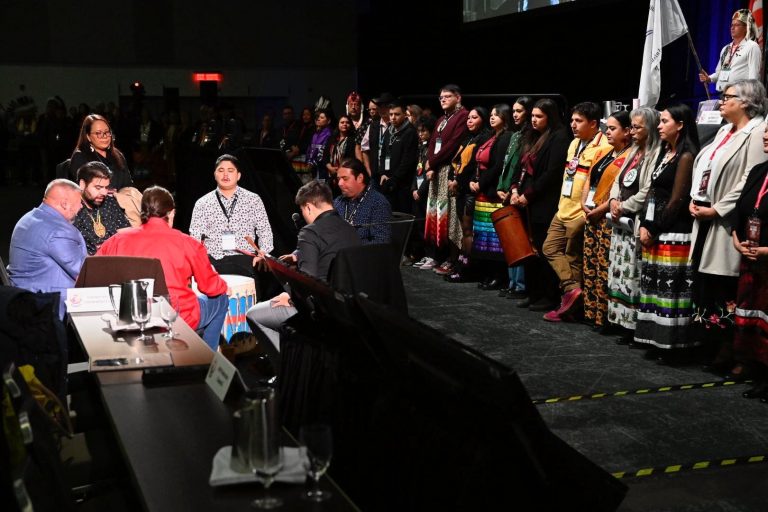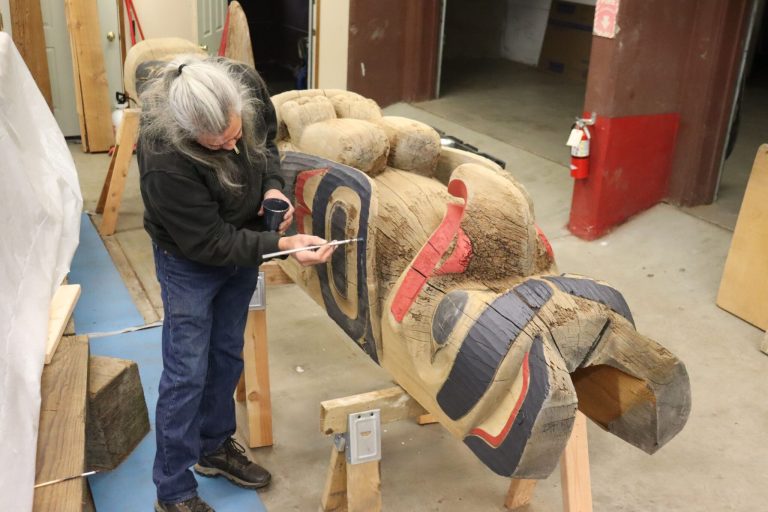Podcast: Play in new window | Download | Embed
A resource guide to help small and medium-sized governments in the Great Lakes region adapt to climate change has been published.
Chuck Quirmbach reports that some tribal communities in the area are already trying to reduce problems caused by higher temperatures and additional flooding.
The guide is from the International Joint Commission (IJC), which helps implement the Boundary Waters Treaty of 1909 between the U.S. and Canada.
Liz Kirkwood of the IJC’s Water Quality Board says climate change has brought more severe storms, loss of ice cover, and extreme temperatures to much of North America, including the Great Lakes region.
“In 2024, extreme weather disasters cost the eight Great Lakes more than $13 billion combined. Some of the costliest disasters happened in the last five years.”
While debate continues over how to reduce air pollution that contributes to climate change, the IJC has published a guide aimed at helping small and medium sized governments adapt to the new temperatures and heavier rainfalls.
Charlie Rasmussen of the Great Lakes Indian Fish and Wildlife Commission says his organization welcomes the sharing of best practices, funding ideas, and other strategies. He says the Commission’s eleven Ojibwe member tribes in Wisconsin, Michigan, and Minnesota are already taking steps, sometimes in collaboration with local, state, or federal agencies.
One project, being, ishkode. That’s using prescribed, or controlled, fires on land next to water.
“They help maintain and re-establish native species, species that do the best job at holding the soil and better able to resist some of these severe precipitation events.”
Rasmussen says other tribes are putting in larger roadside culverts to reduce highway damage from flooding, and to help wildlife move.
He says tribes also share traditional ecological knowledge (TEK).
“It encourages building relationships with plants, animals, and water as living beings, rather than just a natural resource that you manage.”
IJC says it recognizes its Climate Adaptation Guide has some gaps, including needing more content from First Nations and island communities.
 This academic year in North Dakota, eighth graders are getting new textbooks that’ll educate them about the five tribes that are found within the state.
This academic year in North Dakota, eighth graders are getting new textbooks that’ll educate them about the five tribes that are found within the state.
As Brian Bull of Buffalo’s Fire reports, this is a series that’s being revised for the first time in 30 years.
Originally, four texts and a journal were printed between 1995 and 2002. Much of the content came from interviews with tribal elders in the 1970s.
This new series will still feature books on the Spirit Lake Oyate, Standing Rock Oyate, Turtle Mountain Ojibwe, and the three affiliated tribes Mandan, Hidatsa and Arikara Nation (MHA), but a new edition on the Sisseton Wahpeton Oyate has been added.
And each tribe had exclusive editorial control over their respective book, which included more recent historical information.
“It’s so important that Indigenous peoples are represented in a contemporary sense.”
Sashay Schettler is an MHA citizen and the assistant director of North Dakota’s Office of Indigenous and Multicultural Education. She recalls classmates growing up who thought Native people were extinct.
“Then you have people getting elected into positions and if you have somebody thinking that Indigenous peoples don’t exist, they’re going to make policies that aren’t bettering our communities for everyone.”
Five percent of North Dakota’s population is Native American.
Nick Asbury is a former employee of the North Dakota Department of Public Instruction who has remained active in promoting the books.
“It’s important that we have the platform for the nations to tell their own story, because kids are smart. They know when something is authentic and when it’s not.”
An original overview entitled “Journey to Understanding: An Introduction to North Dakota Tribes” is still part of the set.
Besides eighth graders, people can download the set for free, or order a published copy online.
Get National Native News delivered to your inbox daily. Sign up for our daily newsletter today.
CHECK OUT THE LATEST EPISODE OF NATIVE AMERICA CALLING



